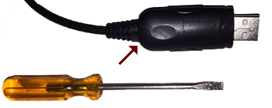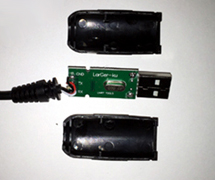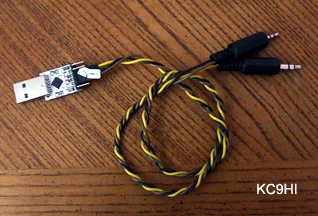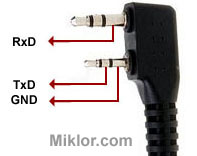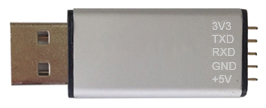Archive for the ‘Uncategorized’ Category
 Amateur Radio Weekly – Issue 74
Amateur Radio Weekly – Issue 74
$8,000 fine proposed for Ham causing interference, failing to identify
Ham volunteered to track down the interference he was causing.
ARRL
Are Amateur Radio-based emergency communications still relevant?
From “we are the be all and end all of disaster communications planning” down to “hams who show up to emergency scenes should be arrested.” So what’s the answer?
VA3QR
Slim Jim vs. Traditional J-pole Antenna
Real measurements of a Slim Jim antenna and traditional j-pole antenna reveal the truth about their respective gain and pattern.
hamradio.me
New, fast JT9 Meteor Scatter modes
Joe Taylor K1JT has published some information about the new ‘Fast JT9’ submodes for Meteor Scatter communication on 28 and 50 MHz.
Southgate
Rufus Turner: Ham Radio’s first African American Operator
Rufus was an engineer who developed the 1N34A germanium diode in the 1946.
KC4LMD
First Tracksoar test flight
The Tracksoar APRS tracker is designed to be flown under anything capable of lifting 60 grams, including balloons, RC planes, quad copters, or anything else that flies.
Tracksoar
Danish CubeSats head for ISS
The IARU have coordinated 437.250 MHz for the 1k2-9k6 bps beacon and 437.425 MHz for the GMSK beacon.
AMSAT UK
SkookumLogger contest logger for OS X
Supporting CW and SSB events on the six HF contest bands plus 6m, 4m, 2m, and 70cm.
K1GQ
CJU satellite antenna for HTs
A minimalist satellite system.
VE6AB
How to
Setting up Ubuntu for Decoding NOAA and Meteor M2 Sats
In this guide, I will attempt to make it easy to set up Ubuntu with GQRX, GNU Radio Companion, WxtoIMG, and Tools for decoding Meteor M2 Sats.
voiceoverman
And finally…
One acorn too many
Woodpecker fills Antenna with Acorns.
YouTube
 I’m back…
I’m back…
 Build a $2 USB Radio Programming Cable
Build a $2 USB Radio Programming Cable
| Frustrated with that generic programming cable? This $2 solution might just be your ticket to sanity. | |||||||||
 | |||||||||
| Let’s See…You purchased a radio and programming cable, loaded the software, and that’s as far as you’ve gotten. You’re fighting with error messages: – Radio did not respond – Could not open COM port – Run Time Error and Windows (TM) 10 keeps changing your drivers.Now you do what many owners do. Put the radio in the drawer to be worked on later. This is like buying a rollaway treadmill and putting it in the closet until the next time you want to exercise. (NOT gonna happen)But wait, yours has the company name and logo right on the cable. – It doesn’t matter. Keep reading.There are a few options available, such as an FTDI cable. It’s truly Plug ‘n Play, and costs about $20.But here’s a project that just might solve the issue for around $2. All you need is a small flat blade screwdriver, a soldering pencil, and a CP2102 board. CP2102 The CP2102 is a USB to TTL UART chip. What? CP2102 boards can be found on eBay for around $2 and on Amazon. Here’s How Let’s start with that original cable.
Take a small screw driver and pry the open the case from the back where the cable enters.
It should only be snapped together.
Unsolder the 3 wires connected to the board.
Solder the 3 wires to the corresponding terminals on the new board. Note 1: Some boards may have the TxD and RxD reversed. If it doesn’t work the first time, reverse the two wires. No damage has been done. Note 2: Some boards have pins on the back requiring small connectors. You can either remove the pins, solder to them, or use the connectors. Whatever floats your boat.
Driver If the driver is labeled CH340 instead of CP210x in Device Manager, that’s not a problem. Both chips are designed to do the same thing. But I don’t have a Cable If you don’t have a generic cable, you can use 2.5 and 3.5mm stereo jacks. Here are the pin outs, and what Jim’s (KC9HI) cable looks like.
Cosmetics If you are adventurous, try retrofitting the new board inside the original plastic housing. This will require a Dremel tool, X-Acto knife, Glue, and some patience, but it can be done. If the board only has 5 terminals instead of 6, it’s not an issue. You only need GND, TX and RX. Some come protected with a piece of clear heat shrink over the board so you can see the cool blinking lights. Note 3: If you are trying to retrofit the board inside an existing shell, the red board below is a bit shorter and easier to fit.
For a dollar or so more, you can find the same boards in a metal case.
What’s the Advantage – First and Foremost, it works. Take the radio out of the drawer, program it and have some fun. – Next, it only cost around $2 to save the generic cable from the trash. – Very Important – Bragging Rights. Now, when you go to a club meeting and someone says they can’t get their cable to work, tell them they can build their own, just as you did. I hope you had fun with this project. It’s super simple and very rewarding. I’ve made several and never had a failure. Say goodbye to driver issues.
|
 Shack photo
Shack photo
This was me on the 2m FM net in East Cambridgeshire last night. There were only 3 of us on last night. These days I tend to use WSPR quite a bit as my voice is still pretty poor. We meet on 144.575MHz FM at 8pm local time most Mondays. Note, this is in the all-mode section. Newcomers are always welcome to join us. QSOs are never more than 1 hour and frequently much less.
 Failed 136kHz QRSS3 test
Failed 136kHz QRSS3 test
Well, I optimised my 136kHz QRSS3 beacon match into my earth electrode “antenna” used on 472kHz and tested it in the house and right outside. All looked promising, so I headed for my local car-park about 1.8km away. I was quite confident that with an E-field probe on the car I’d get a decent result. From the old QTH I got to the far side of Cambridge before I gave up as copy was so good!
Not a dicky bird – nothing at all, indeed I only got copy again when I entered our close at a range of a few hundred metres. As at VLF, the earth electrode “antenna” at this QTH is useless.
Not only that but at the end of the test I realise how poorly I still must be as I was totally exhausted. In my fitter days this test would have been totally trivial, but not any more. I think my trees and short baseline make this “antenna” totally out of the question at this QTH at LF. I need a better antenna for LF and MF use.
So, 136kHz was bad. A poor result and quite a lot worse than I was expecting. I was hoping for an encouraging result, but none was to be had.
 Amateur Radio Weekly – Issue 73
Amateur Radio Weekly – Issue 73

Getting started in Meteor Scatter
I write this during the peak of the Perseid meteor shower as it’s much more likely for a newcomer inspired by the article to decode meteor scatter bursts with a modest VHF station.
M1BXF
Perseids peaking
My receiver immediately sprung to life with a very loud SSB signal, slightly off-tune. We talked back and forth for about another 60 seconds before the burn finally dissipated.
VE7SL
Meteor Scatter experiments
Last weekend was very close to the peak meteor shower from Perseid. This gave us an ideal opportunity to try meteor scatter for the very first time.
Loughton & Epping Forest
J-Pole antenna grounding
A fully grounded antenna is certainly a very worthwhile goal so long as you don’t needlessly compromise the antenna’s functionality.
hamradio.me
Cross country HF APRS
The HF APRS network that resides in North America is on the high end of 30 meters. This band is open day and night.
VE6AB
$40 Arduino antenna analyzer
It is no surprise that hams will build an antenna analyzer from a DDS module and an Arduino instead of dropping a few hundred dollars on a commercial unit.
Hackaday
Skywave Linux
With global SDR access, shortwave listeners can access broadcast, utility, amateur radio, military, and other signals from almost anywhere in the world.
Skywave Linux
Tennessee QSO Party 2015
1800z Sunday, September 6 until 0300z Monday, September 7, 2015
Tennessee QSO Party
Noise canceling speaker hack
I have several Onkyo speakers from a retired surround sound system and a 100 watt 12 volt car audio amplifier and started to think on hacking this into something usable.
Prepared Ham
How to
Add OpenStreetMaps to Xastir
This tutorial will guide you how to install OSM maps into Xastir software.
S55MA Ham Blog
Video
Replace the meter light on a Kenwood TS-430s
KF4NOD
Portable radio operations
Using Morse Code to keep in touch with friends.
Wiltshire Man
 "Web price is best or call"
"Web price is best or call"
 |
| FT991 from Yaesu |
The ongoing saga of the FT991 price fall continues. The phrase in the title is from the latest advert by MLS in Radcom. It looks like they know the price is too high but are looking to see who drops the price first – a kind of game of “chicken”. The best price advertised is £1139. Meanwhile the FT450D (HF and 6m) is just £499 from Waters and Stanton. I confidently predict the price of the FT991 from the major retailers will drop to £999, or even less, soon.
